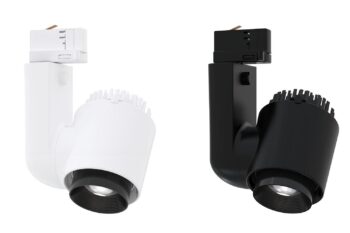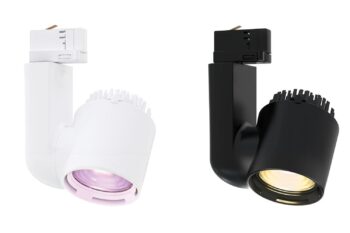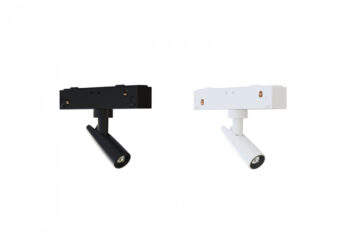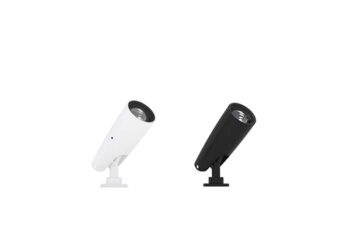The Resistance Museum Amsterdam keeps the memory alive of a period of dictatorship, war, persecution, and resistance in the Netherlands and former colonies during World War II. This is done within a broad historical context: a recent historical period that had far-reaching consequences. The museum also addresses anti-colonial resistance against the Netherlands and draws connections to the present. It particularly highlights personal stories from various perspectives. As a result, the Resistance Museum stimulates reflection and provides insight into the value of tolerance, freedom, and democracy. On Friday, December 2, 2022, the museum was festively reopened. The museum has completely revamped its exhibition. The Second World War is now presented in a more nuanced way than before at the Resistance Museum. In 2023, the museum will be further expanded with a permanent presentation on the situation in the Dutch colonies.
Liesbeth van der Horst, director of the Resistance Museum Amsterdam:
“It was time to translate the presentation, both in appearance and content, to the present. We incorporated gripping stories of people who experienced the war in very different ways. All these intense experiences together tell our common history in a new way.”
Now, after the renovation of the exhibition, the Resistance Museum Amsterdam is also the only museum in the Netherlands that can be visited independently by people with disabilities. This makes the new exhibition more interactive, narrative, and inclusive.
The atmosphere in the exhibition spaces is more spacious and modernized with artistic installations featuring various and exciting material choices, as well as interactive exhibition elements. The renovation was carried out by exhibition builder Kloosterboer, based on a design by Creative Design Studio Ilona Laurijsse, who also approached the firm HeinzLoopstra for a completely new lighting plan. HeinzLoopstra said, “We were asked by the exhibition designer Ilona Laurijsse. We have worked with her on previous projects, including Oyfo in Hengelo. About a year before the renovation of the Resistance Museum, Ilona made the design for the temporary exhibition ‘Be Brave! Three Amsterdammers and the February strike,’ for which we created the lighting design. This process was also a preview for the museum of our collaboration on the renovation of the entire museum.”
However, the lighting design duo originally comes from the theater industry, and that’s where their roots lie, they say. They still work there a lot, but it is precisely their expertise in this field that made them a good fit for this exhibition and the museum world. They bring theatricality to exhibition spaces and make a space exciting and inviting through the use of colour, shadows, and dynamics.
That’s exactly what they did at the Resistance Museum Amsterdam. Due to the museum’s renovation, the duo was able to create an interactive lighting plan that perfectly met the requirements and wishes. “The museum was completely stripped down for this exhibition. This allowed us to precisely determine where we wanted to place the lights and light rails. Previously, there was a fixed grid of rails. For this exhibition, which consists of many rooms and chambers, we had to place the light rails specifically for each room to illuminate the exhibition properly. We were able to reuse a large part of the 3-phase rail for this purpose.”
In this project, they have used various CLS track fixtures from different series, namely the Jade ColourFlow (RGBW), Jade Zoom, Focus GIII, and Focus Micro. Each type of fixture has been used for a specific purpose: “Each type of fixture has its own role in the exhibition. The exhibition has different ceiling heights. For the higher areas, we used the Jade Zoom because of its higher light output. The new Focus GIII was the perfect fixture for the lower spaces (approximately 3 meters). The Jade Zoom is too large for these areas and would visually dominate such a low space. We deliberately chose the in-track adapter to keep the fixture as compact as possible and to place it as high as possible. The Focus GIII has good light output, and its large zoom range allows it to be used for accent lighting as well as wall washing. We used the Focus Micro in places where the Focus GIII was too large, particularly in display cases and a few lower parts of the museum. At the beginning of the exhibition, there is a dynamic section that runs in sync with projections. Here, we wanted to use controlled light and colour, so we opted for the Jade Zoom DMX and the Jade ColourFlow DMX. We also worked with the Casambi control system, as it allowed us to create dynamic lighting without the need for an entirely new cable infrastructure. We also used Casambi motion sensors to control display cases with light-sensitive collections. Placing the sensor in the rail and having everything work wirelessly saved time and costs in the process.”
They chose CLS fixtures because they offer a high degree of flexibility to designers. They found the zoom range, dimmability, and the ability to use various accessories such as barn doors and beam shapers very pleasant. This allowed them to manipulate and control the light to perfectly execute their vision. Additionally, they find the fixtures aesthetically pleasing and find that they have good light quality.
Therefore, the challenge did not lie in the placement of the fixtures in this project. The duo even stated that the project went very smoothly because they could start “from scratch” and make many adjustments according to their preferences. The collaboration between all the parties involved went well, allowing them to achieve the best possible result, which they are very satisfied with. “A good lighting design always starts with a good spatial design. Ilona’s design was very exciting and inviting for us to illuminate. There were many different textures on the walls and beautiful spaces where we could work with shadows and contrast. We are very happy with the result. The lighting design creates various atmospheres throughout the exhibition. We were able to take advantage of the different spaces and highlight sight lines with light.” A visit to the Resistance Museum Amsterdam is now a pure experience, intimately connected to history.









